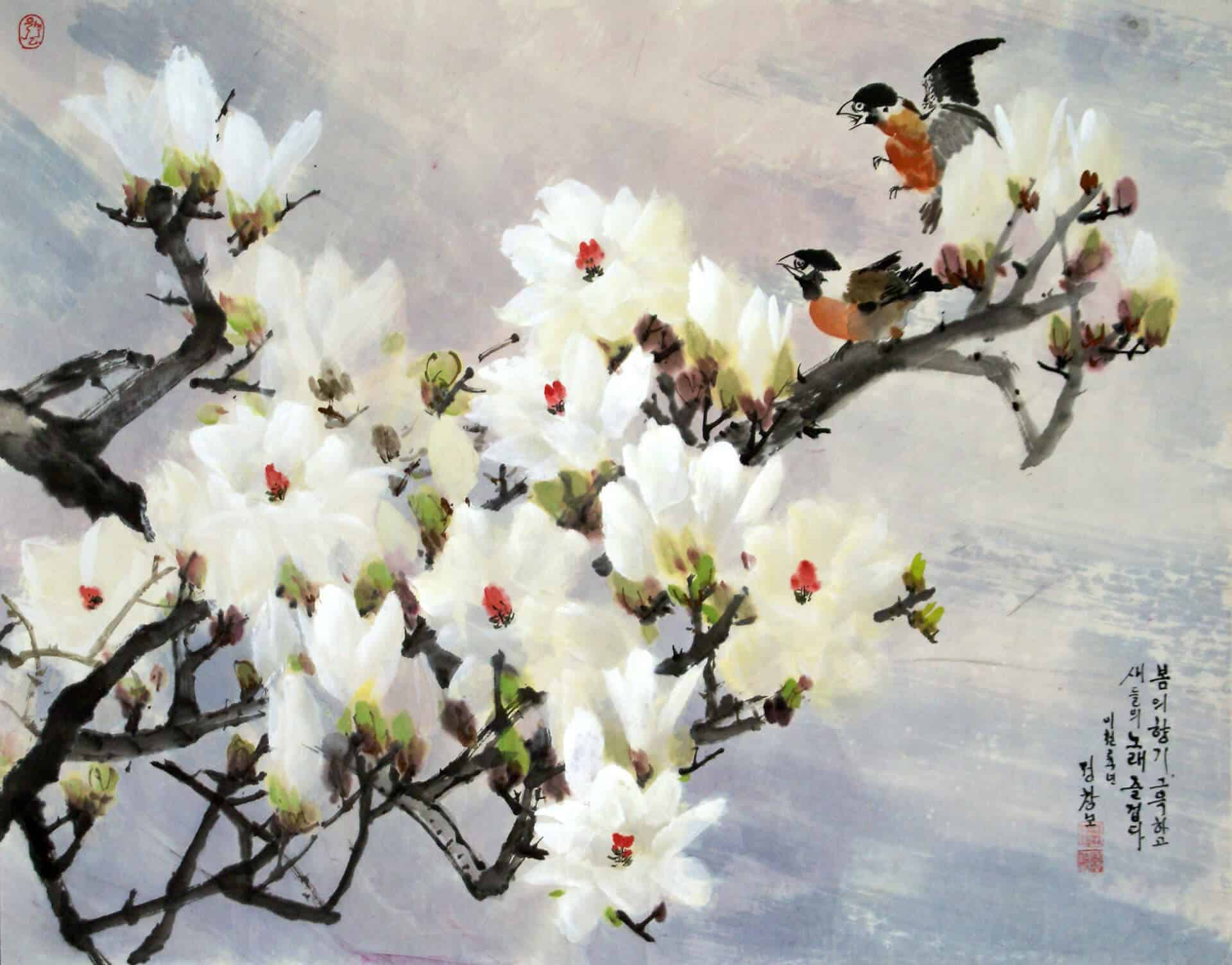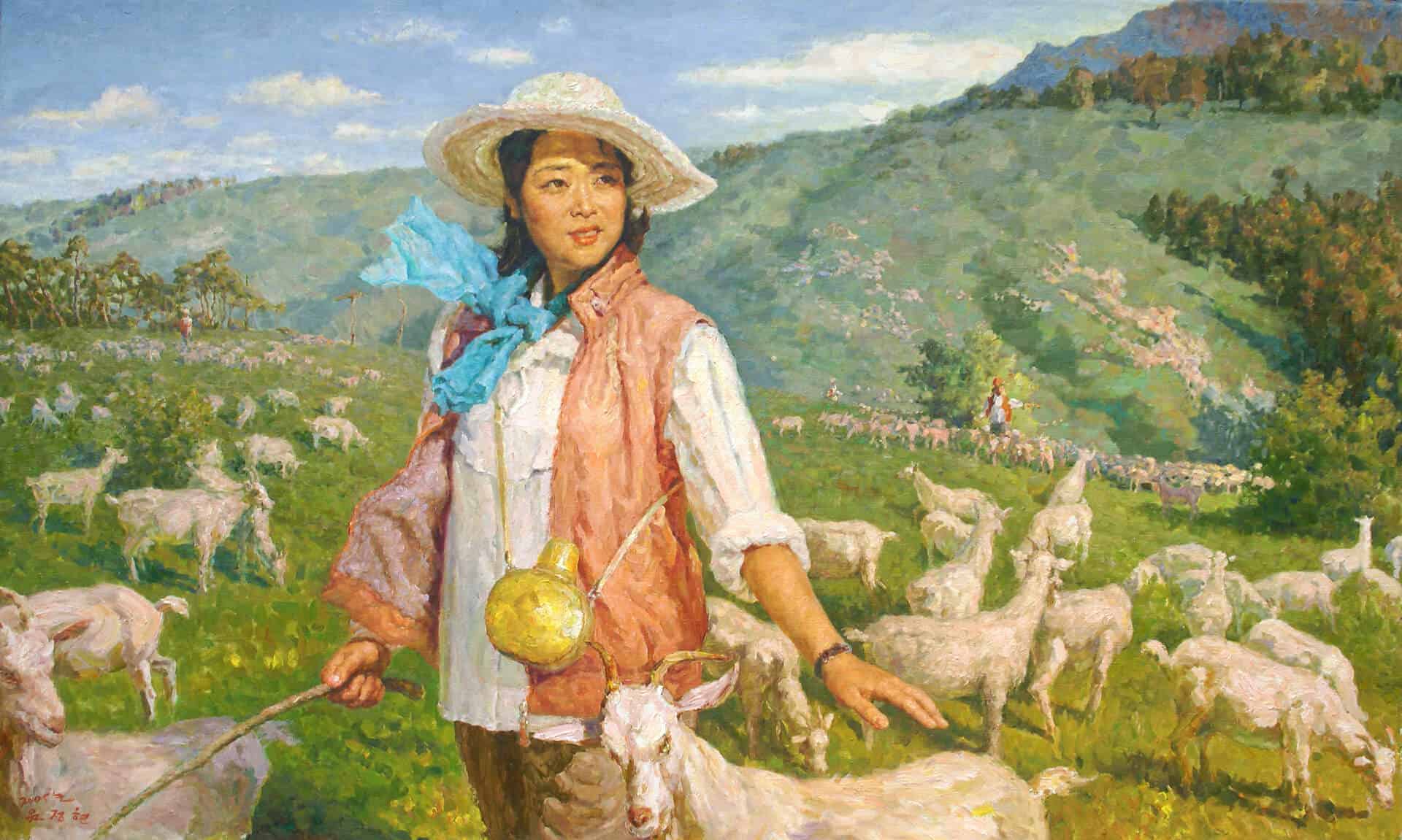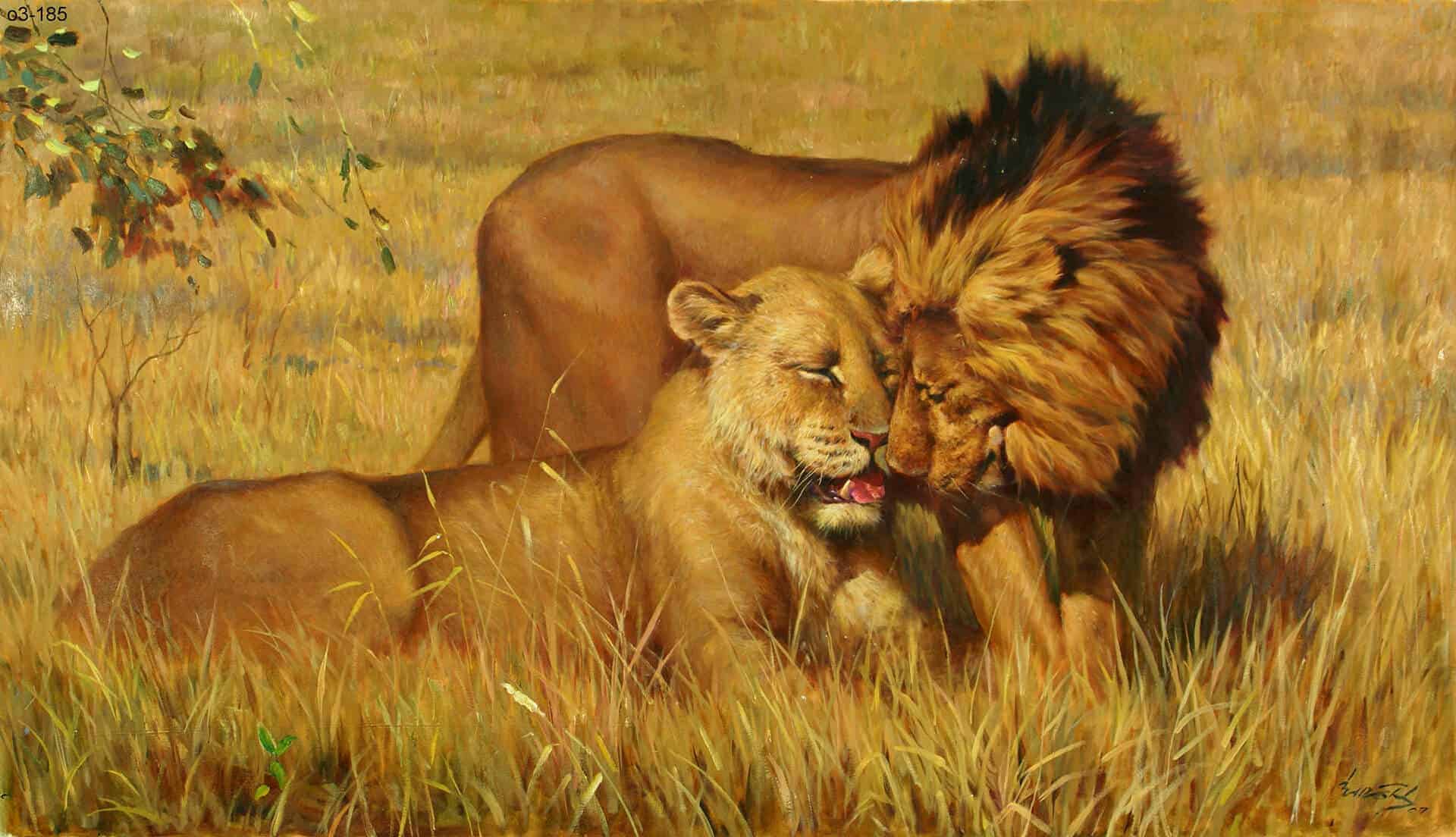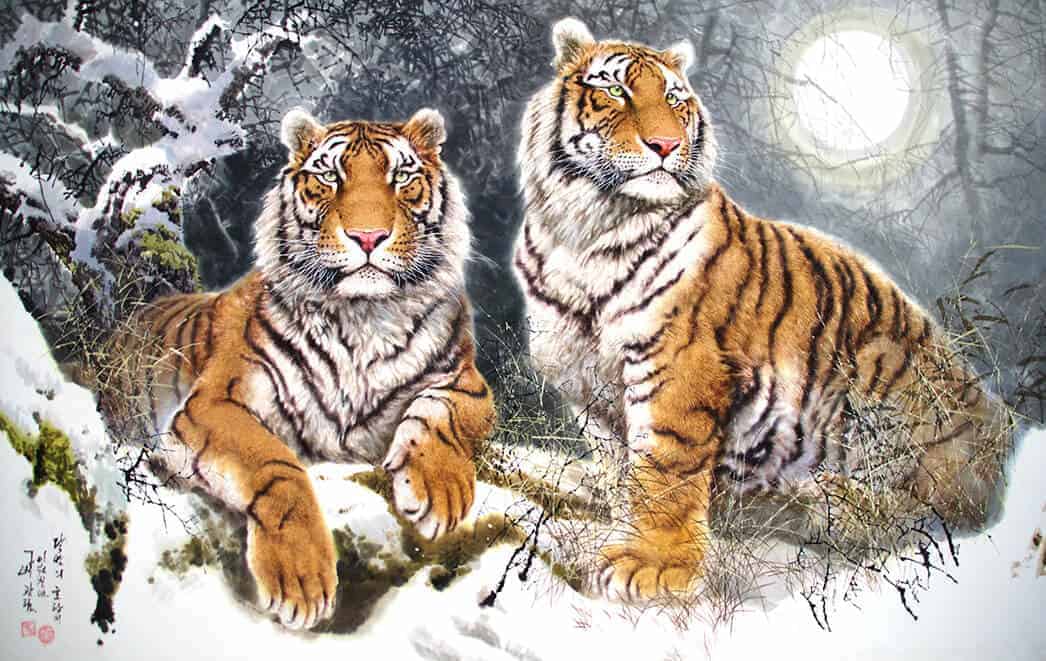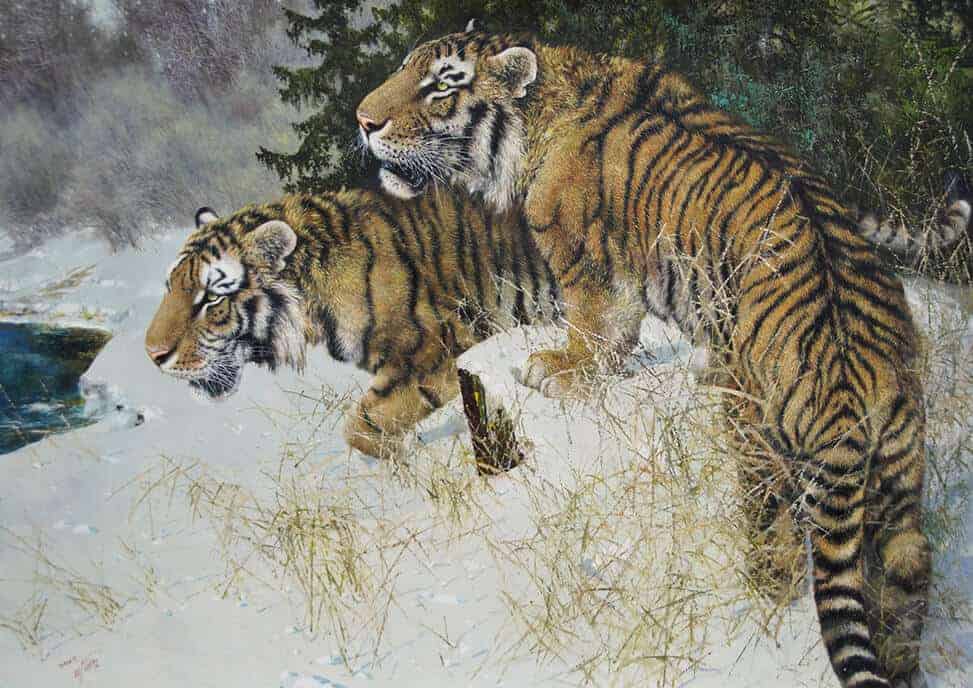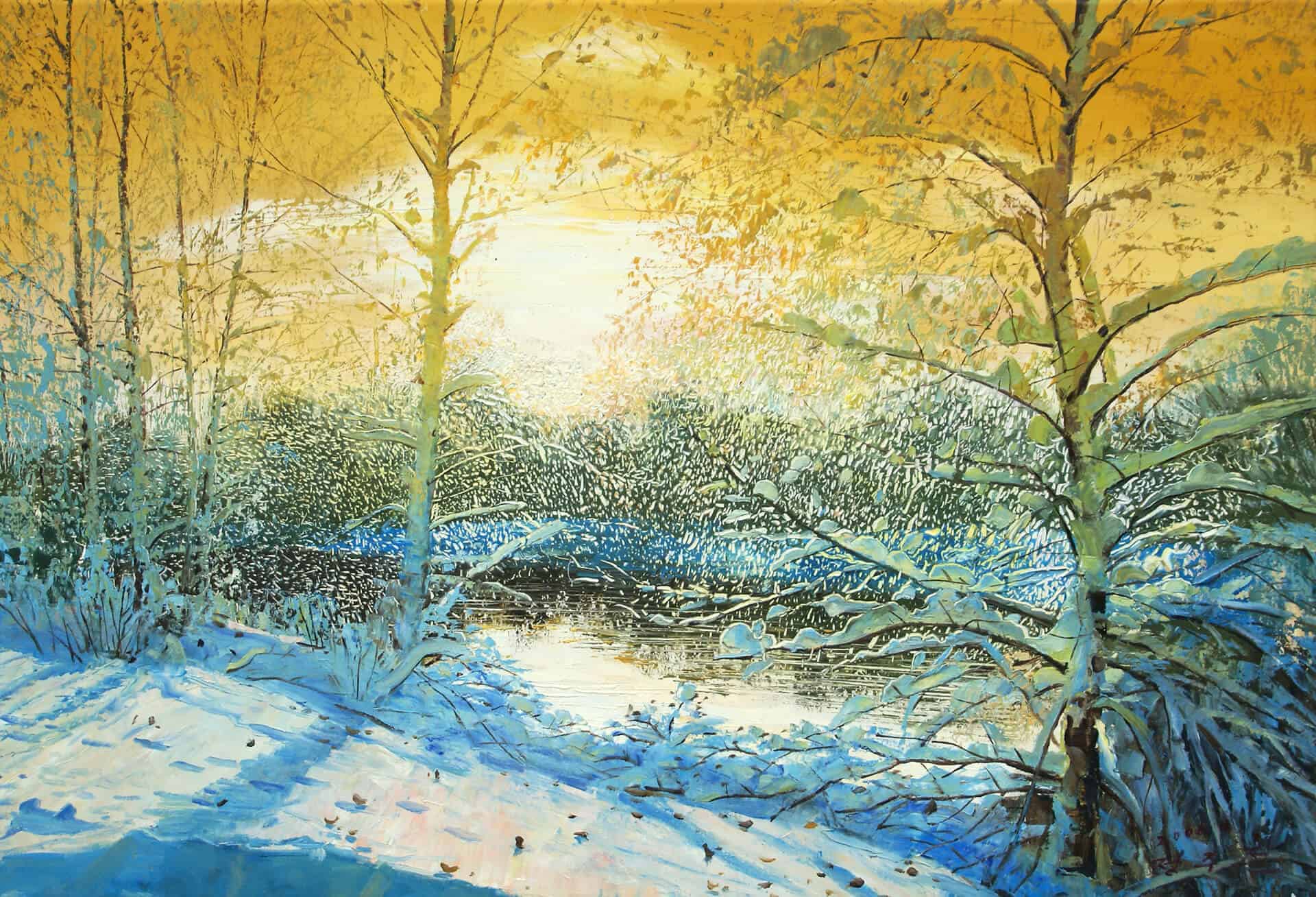
Korean Art
The Kaesong Collection unfolds a stylistic and genre panorama of Korean contemporary painting and brings out two aspects in the development of Korean painting. One of them is associated with long art traditions of Korea, the Far East countries and their art heritage, the other, more modernist trends on the arena of the world art. Still, the major subject of Korean painting remains the landscape. It has its origins in China; however, it was gradually growing in importance and finally developed into an independent genre.
Landscapes
Oriental artists aspired to embody landscape as an exalted garden of nature and to transfer it to a symbolic level. Therefore, traditional Oriental landscapes mostly capture wild nature motifs – mountains, canyons, waterfalls, rivers and lakes. The landscape painting was in a certain measure connected to the attempts to portray a only specific reality of forms. The traditional “rock and water” paintings served for rendering the balance between the origins of peace and movement, indispensable for the achievement of final harmony.
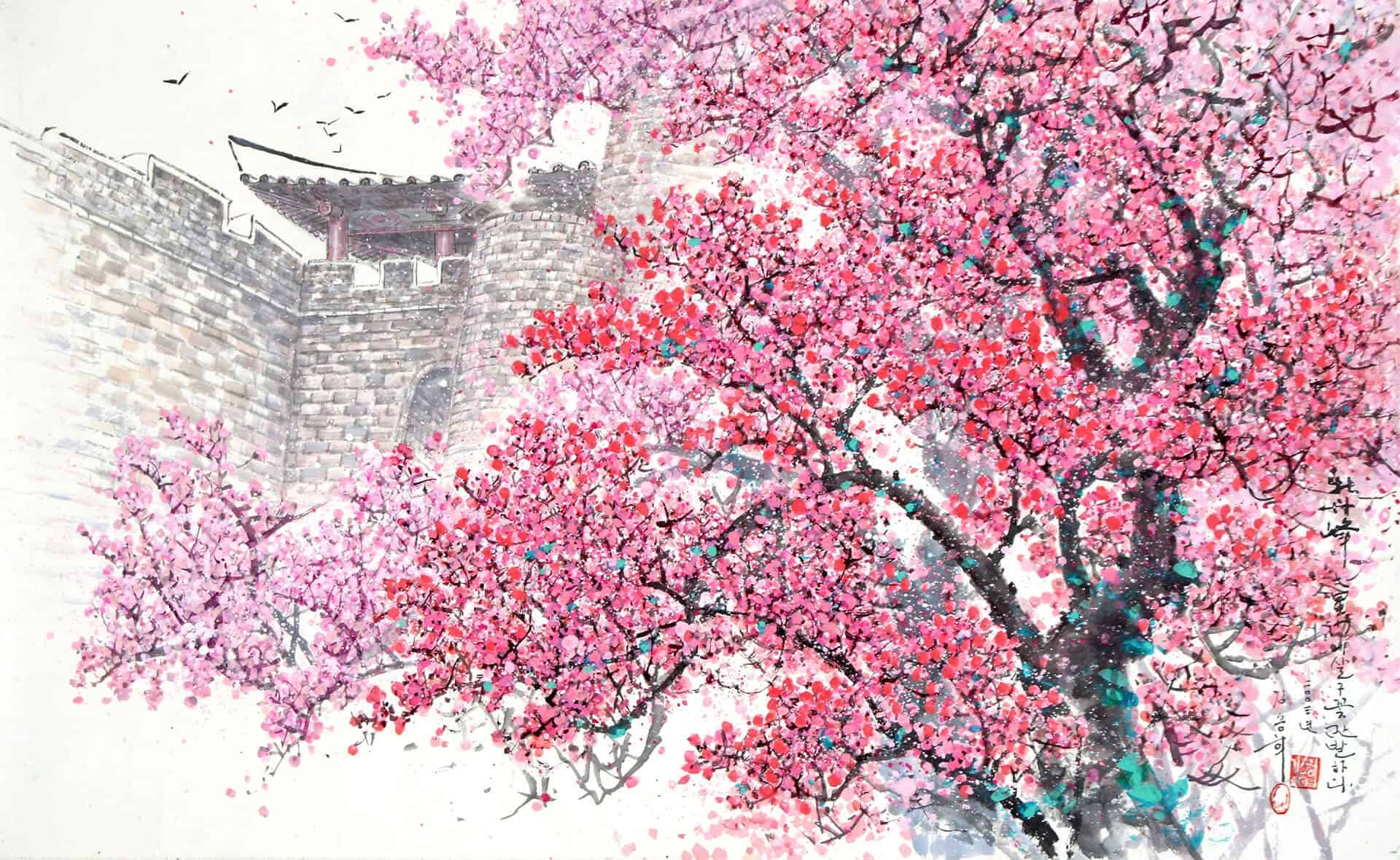
Traditions
The majority of today’s Korean painters follow the path of traditions. It is this, exotic to us part of their work, that conveys the aroma of their country. Each nature’s motif gives meaning to a certain conception of value, such as spiritual strength, firmness, longevity and wisdom. Artists express the heavenly origin of nature by symbols, a sincere, initial meditative relationship with nature. Beasts, birds, flowers and fruits found their niche in the hierarchy of traditional painting genres.
Linear painting
It was history that destined Korean art to be directly influenced by traditional Chinese painting. It has adopted its principal element – the line. A line by a brush stroke invests painterly works with rhythmic patterns and a ring of musicality. The most distinguished artists of this linear painting are female painters Kim Sung Hui and Kim Song Min.
